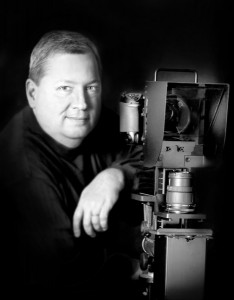
The built-in flash on your camera is quite convenient and useful. So, turn it off. “Why?” you ask. Because your photos will look so much better if you can get the light source away from the camera. Light coming directly from the camera is the least flattering light you can use.
Look at this lovely young lady. See how one side is brighter than the other? There are bright spots in her eyes but not right on her pupils. Also, she has a shadow on the dark side of her nose and another on her neck. All those elements add up to a more three-dimensional look that is much more appealing than if a flash hit her directly in the face.
You can create images with this kind of texture if you learn to use directional light. Window light is beautiful. Just put your subject right by a window with indirect light. You can also try existing room light. If you’re outside, look up. You’ll see a really big fancy light up in the sky. At night, street lights can work for you. Try to have the light hit the subject from three quarters or from the side rather than head on. Also, check the color. You can get some odd colors using different light sources.

Check your owner’s manual to see what settings your camera has for the flash. Most people know about red eye reduction, but many cameras have a fill flash setting as well as other settings you’ve never used. Take a little time to experiment. It could improve your photo albums dramatically.
If you have a question, email me at [email protected]. Read past articles at www.gregmayo.com.









